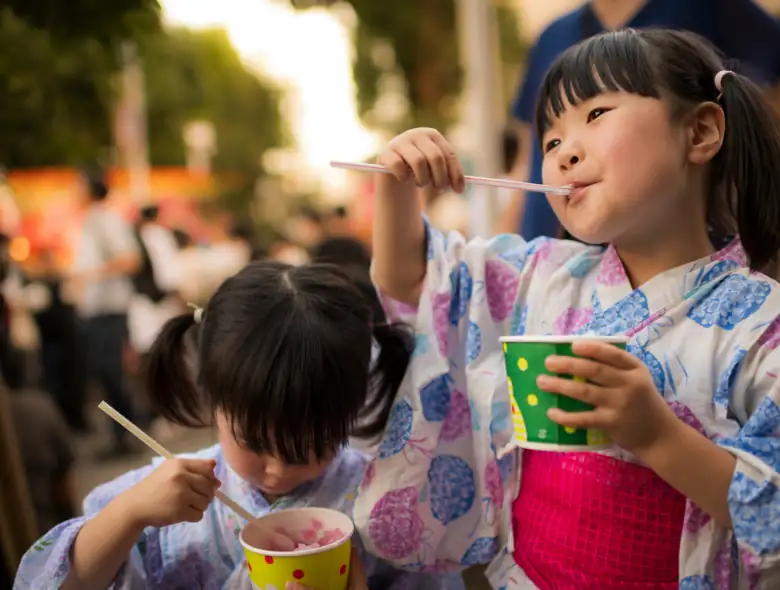Japan’s summer season spans from June to August (coinciding with the off-peak season for house hunting according to Village House bloggers). During this period, residents and tourists are treated to a horde of festivals and events known collectively as natsu matsuri or summer festivals. The tradition of natsu matsuri stems from when harvests were planted in the summer – farmers and villages would hold festivals to pay tribute to the gods in return for a favorable and abundant crop yield.
Now, the tradition has evolved into a fun summer pastime to be enjoyed by family and friends across the island. Some of Japan’s most famous and popular summer festivals include:
- Aomori Nebuta Matsuri, which is held annually in early August in Aomori City
- Gion Matsuri, which runs for the entire month of July in Kyoto
- Tanabata, or the Star Festival, which is held on July 7th
Aside from the festivities, visitors to one of Japan’s many summer festivals also look forward to the events’ offerings of snacks and sweets. In this article, we’ll be exploring 5 must-try Japanese summer festival sweets that have proven to be a hit for locals and tourists.
1. Taiyaki
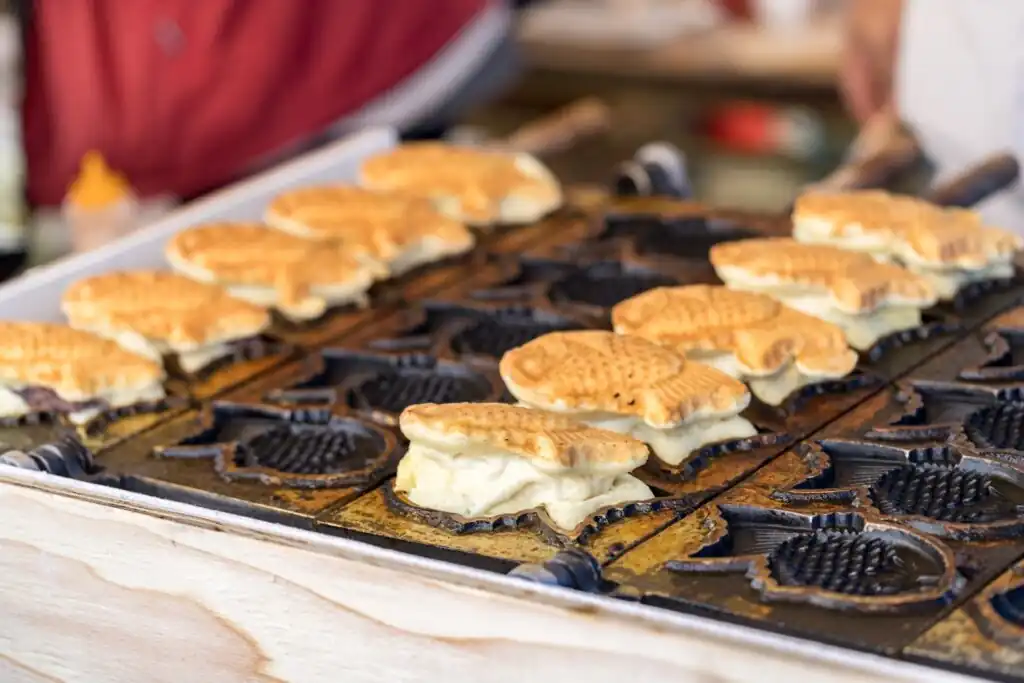
Taiyaki translates to “baked sea bream” and is a nod to the original mold for the snack that was in the shape of sea bream fish, which in Japan is a symbol of good fortune and prosperity. The word “tai” means sea bream and “yaki” means to bake or grill.
Taiyaki was introduced in the Meiji Era (1868 ~ 1912) and is a snack made up of flour, sugar, baking powder, and water or milk. A popular street food in Japan and parts of Asia, the snack is cooked in waffle makers in the shape of a sea bream or other fish until golden brown. The original molds were made of cast iron or copper but nowadays, non-stick materials are preferred.
Though traditionally, the filling – anko or sweet red bean paste – which is made from sweetened adzuki beans, variations of the snacks can be found with fillings of chocolate, sweet potato, custard, and even matcha.
2. Chocolate Banana

Chocolate banana is a popular Japanese street food snack sold by street vendors at festivals. It was popular around since 1903 when imported bananas from Taiwan became a coveted and favorite fruit in Japan.
As the name suggests, the snack is made by simply dipping bananas into melted chocolate and waiting for the chocolate to harden into a shell around the fruit. It is usually served and sold on a stick or skewer.
Many street vendors decorate this otherwise simple but delicious snack with rainbow sprinkles, and crushed nuts, or even use colored chocolate to tempt festival goers.
A variation of this popular festival snack is Tokyo Banana, which is a banana-shaped sponge stuffed with a cream filling. Unlike its predecessor, Tokyo Banana can be found in stores throughout Japan all year round, and it has become a popular souvenir for locals and tourists to gift to their family and friends.
3. Shaved Ice
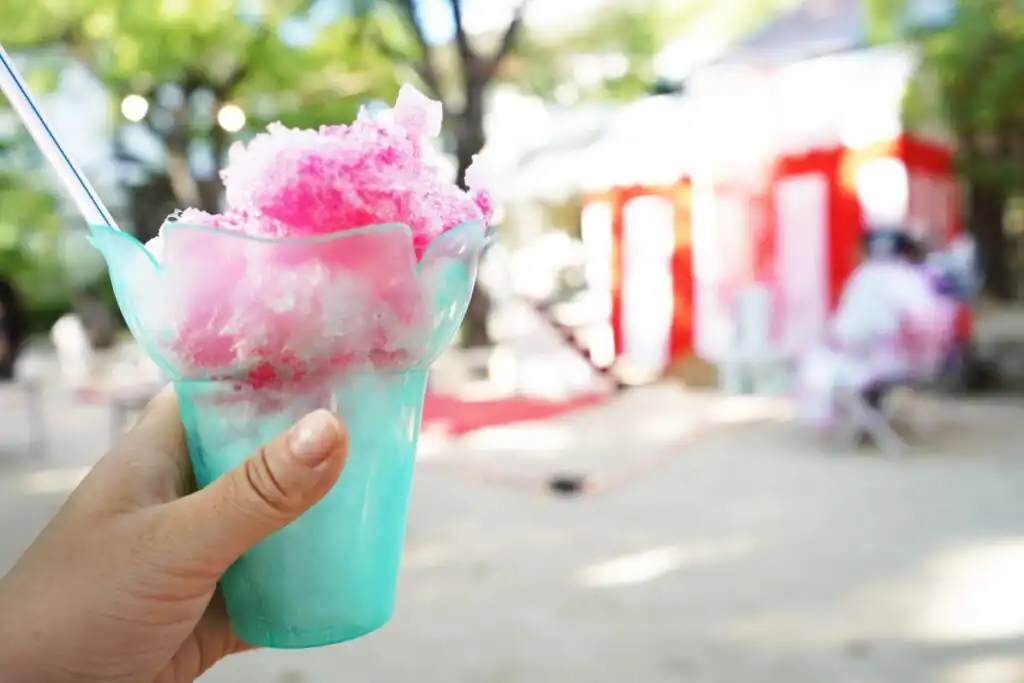
Shaved Ice or kakigori in Japanese is Japan’s answer to a snow cone though its texture is fluffier, like freshly fallen snow. The snack is made by piling up shaved ice into a cup and then soaking it in a sweet liquid such as syrup, fruit juice, or condensed milk. Depending on the vendor or shop, it can also be topped with various toppings, ice cream, and yogurt.
Kakigori was introduced in Japan in the 10th century during the Heian Period and was originally a cold, sweet treat enjoyed exclusively by Japanese nobility during the hot, humid summer months. As technology evolved and ice became more accessible and affordable, the treat spread among the masses and became the popular summer festival snack enjoyed by many in Japan. It is said that the first kakigori store opened in 1869 in Yokohama and July 25th is known as Kakigori Day because the pronunciation of the date sounds similar to “summer ice” in Japanese.
4. Sweet Potato
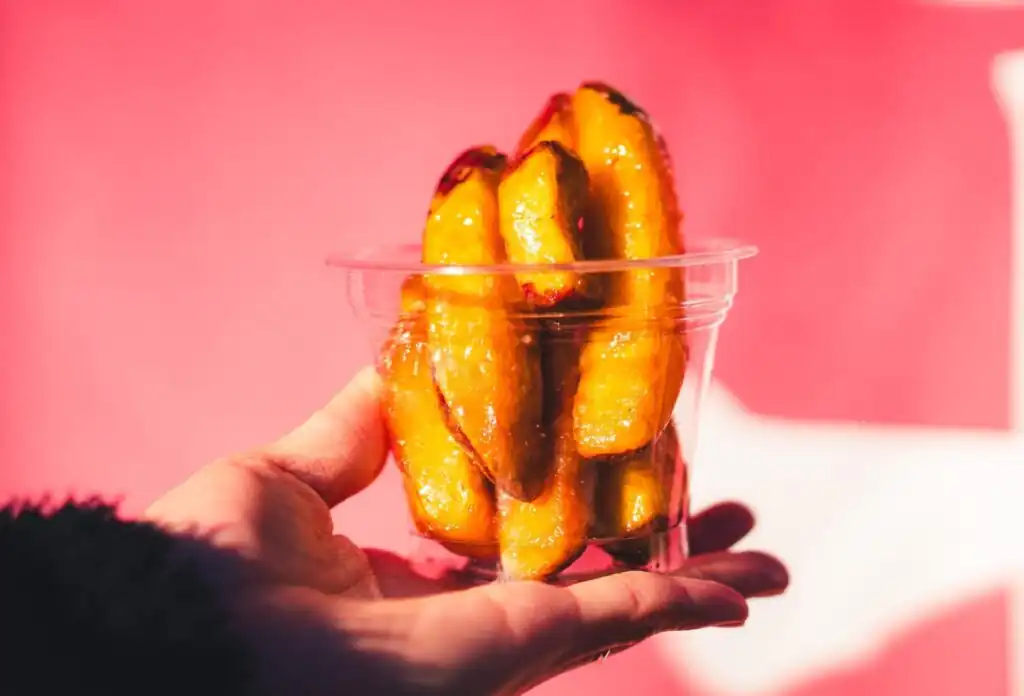
Known as satsumaimo or just imo in Japanese, Japanese sweet potatoes are starchier, sweeter, and taste nuttier and earthier than their Western counterparts. Generally, medium to large, they are cylindrical and bulbous in shape and are said to have a fluffier and lighter texture.
These root vegetables were first introduced to Japan in the 17th century and were either baked or steamed. Nowadays, sweet potatoes are a popular street food snack and festival snack in Japan. Another popular variation is daigakuimo, which are sweet potatoes that are deep-fried and marinated in syrup. With a crunchy outer coating and a soft inside, this is a sweet treat you shouldn’t miss out on!
5. Cotton Candy
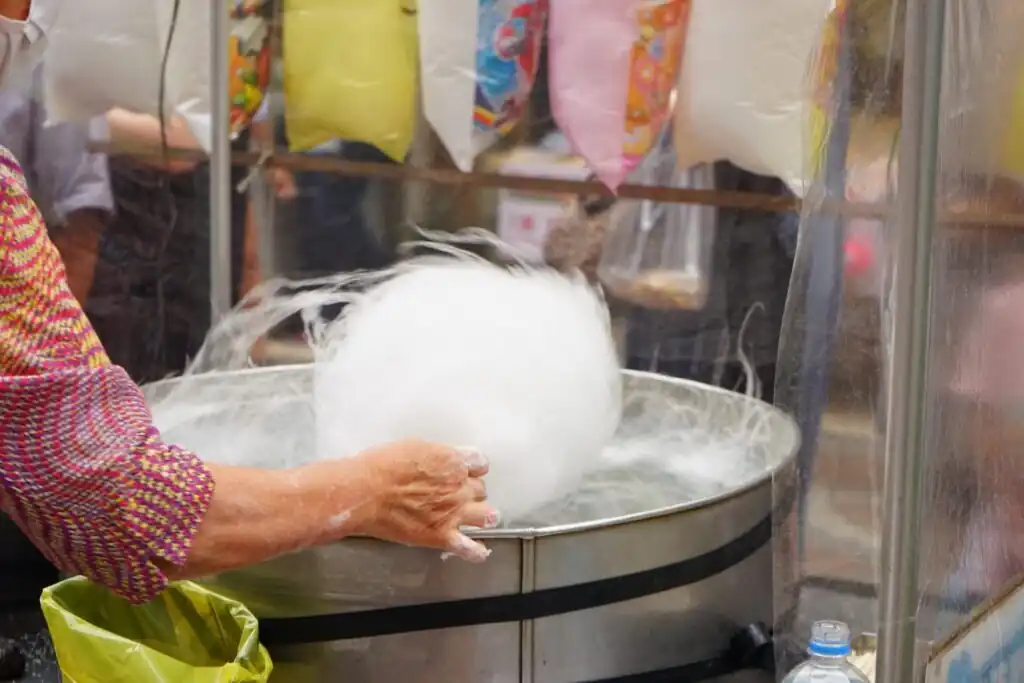
Perhaps unsurprisingly, cotton candy is famed for being a prominent snack in festivals and events worldwide, and Japan is no exception. Part production, part delicious treat, cotton candy attracts the wandering eye of children and adults alike with its fluffy, cloud-like texture and rainbow palette of colors.
The sweet snack was invented in the 19th century by a dentist called Dr. William Morrison, who collaborated with confectionary maker, John C. Wharton in 1897 to invent a machine that would heat sugar in a spinning bowl, caramelize it, and turn it into light, sugary strands that are spun into cotton candy or fairy floss. The sweet treat was introduced to the world in 1904 at the St. Lous World’s Fair and proved a huge hit.
Cotton candy is not a staple summer festival snack in Japan and for those looking for a fun, creative, and interesting take on the snack, Totti Candy Factory in Tokyo’s Harajuku district is known for spinning cotton candy into wild and amusing shapes.
Related articles:
- August Summer Festivals in Tohoku
- June Summer Festivals in Japan
- Best Summer Fireworks Festival Spots
- Hanabi: Top 9 Summer Fireworks Festivals in Japan
- The 20 Best Japanese Festival Foods you MUST Try

Freelance writer with over 2 years of experience writing for the Village House Blog, ESL teacher, and digital nomad who has lived in countries including The Czech Republic, The UK, The U.A.E., Japan, and most recently, Georgia. Is constantly on the hunt for the best, most optimal apartment for remote work when not enjoying going to film festivals, concerts, and the theater.


